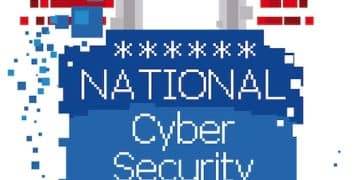Data Minimization: Reduce Your Digital Footprint by 30%

Data minimization is a privacy-enhancing technique that involves limiting the collection, use, and storage of personal data to only what is strictly necessary for a specific purpose, helping individuals reduce their digital footprint and enhance online privacy.
Are you concerned about the amount of personal information circulating online? Understanding and implementing what is data minimization? How to reduce your digital footprint by 30% can significantly enhance your online privacy.
Understanding Data Minimization: A Comprehensive Guide
Data minimization is a core principle in data protection laws and privacy best practices. It revolves around collecting and processing only the data that is absolutely necessary for a specific, legitimate purpose. This approach helps to reduce the risks associated with data breaches and unauthorized data use.
The Core Principles of Data Minimization
The principle of data minimization is built on a few key concepts that ensure data is handled responsibly and ethically.
- Necessity: Collect only the data that is strictly necessary for the specified purpose.
- Proportionality: Ensure that the data collected is proportionate to the purpose for which it is being processed.
- Purpose Limitation: Clearly define the purpose for collecting data, and do not use it for any other purpose without explicit consent.
By adhering to these principles, organizations and individuals can significantly reduce the amount of personal data they handle, thereby minimizing risks and enhancing privacy.

Why Data Minimization Matters for Your Online Privacy
In an increasingly digital world, our personal data is constantly being collected, analyzed, and shared. This proliferation of data raises significant privacy concerns, making data minimization more important than ever.
The benefits of implementing data minimization are numerous.
- Reduced risk of data breaches
- Enhanced compliance with data protection laws
- Greater control over personal information
- Improved trust with users and customers
By minimizing the amount of personal data in circulation, you reduce the potential harm from data breaches and unauthorized use, empowering you to take control of your digital privacy.
Practical Steps to Reduce Your Digital Footprint by 30%
Reducing your digital footprint through data minimization involves taking proactive steps to limit the amount of personal information you share online. Here are some practical strategies to help you get started and what is data minimization? How to reduce your digital footprint by 30%.
Review and Revise Privacy Settings
Regularly review the privacy settings on your social media accounts, online services, and apps. Adjust them to limit the amount of data you share with third parties.
Limit Information Sharing
Be selective about the information you provide when signing up for new services or making online purchases. Only provide the data that is absolutely necessary.
Use Privacy-Focused Tools
Consider using privacy-focused browsers, search engines, and VPNs to minimize the tracking and collection of your data.

Tools and Techniques for Effective Data Minimization
Several tools and techniques can help you implement data minimization effectively. These range from browser extensions to specialized software designed to protect your online privacy.
Browser Extensions
- Privacy Badger: Automatically learns to block invisible trackers.
- uBlock Origin: An efficient ad blocker that also blocks trackers.
- HTTPS Everywhere: Encrypts your communications with many major websites.
Privacy-Focused Search Engines
- DuckDuckGo: Does not track your searches or personalize results based on your history.
- Startpage: Delivers Google search results with enhanced privacy.
Virtual Private Networks (VPNs)
- NordVPN: Encrypts your internet traffic and hides your IP address.
- ExpressVPN: Offers fast and secure connections with a focus on privacy.
These tools can significantly enhance your ability to minimize your data footprint and protect your online privacy. When combined to answer what is data minimization? How to reduce your digital footprint by 30%
The Role of Data Minimization in Compliance and Ethics
Data minimization is not only a best practice for privacy but also a legal requirement under many data protection laws, including the General Data Protection Regulation (GDPR) and the California Consumer Privacy Act (CCPA). These laws emphasize the importance of collecting and processing only the data that is necessary for specified purposes.
GDPR and Data Minimization
The GDPR explicitly requires data controllers to collect and process only the data that is adequate, relevant, and limited to what is necessary in relation to the purposes for which they are processed.
CCPA and Data Minimization
The CCPA grants consumers the right to request that businesses delete their personal information, which encourages organizations to minimize the data they collect and retain.
By adhering to the principle of data minimization, organizations can demonstrate their commitment to ethical data handling and ensure compliance with these important regulations.
Future Trends in Data Minimization: What to Expect
As technology continues to evolve, data minimization will likely become an even more critical aspect of online privacy. Emerging trends and technologies are shaping the future of data minimization, offering new opportunities for individuals and organizations to protect personal information. By answering what is data minimization? How to reduce your digital footprint by 30% you can future proof yourself.
- The rise of privacy-enhancing technologies (PETs): Technologies like differential privacy, homomorphic encryption, and secure multi-party computation are gaining traction, enabling data processing while minimizing the risk of exposing sensitive information.
- Increased focus on data governance: Organizations are implementing more robust data governance frameworks to ensure that data is managed responsibly and in accordance with data minimization principles.
- Growing awareness among consumers: As consumers become more aware of the privacy risks associated with data collection, they are demanding greater control over their personal information and supporting organizations that prioritize data minimization.
| Key Point | Brief Description |
|---|---|
| 🔑 Necessity | Collect only necessary data. |
| 🛡️ Privacy Settings | Review and adjust privacy options. |
| 🌐 VPN Use | Use VPNs for encrypted browsing. |
| ⚖️ Compliance | Comply with GDPR and CCPA guidelines. |
Frequently Asked Questions
▼
Data minimization is the principle of collecting and retaining only the data that is absolutely necessary for a specific purpose. It helps reduce the risk of data breaches and enhances privacy.
▼
Data minimization is crucial because it reduces the potential harm from data breaches, unauthorized use, and non-compliance with data protection laws. It also improves trust with users.
▼
You can reduce your digital footprint by reviewing privacy settings, limiting information sharing, using privacy-focused tools like VPNs and browsers, and deleting unnecessary accounts.
▼
Privacy-focused tools include Privacy Badger, uBlock Origin, DuckDuckGo, Startpage, NordVPN, and ExpressVPN. These tools help minimize tracking and protect your online privacy.
▼
Both GDPR and CCPA emphasize data minimization, requiring organizations to collect and process only the data that is necessary for specified purposes and granting consumers rights over their data.
Conclusion
Implementing data minimization is essential for protecting your online privacy and reducing your digital footprint. By understanding the principles and adopting practical strategies, you can take control of your personal information and navigate the digital world more securely. This can easily help you achieve answering what is data minimization? How to reduce your digital footprint by 30%





